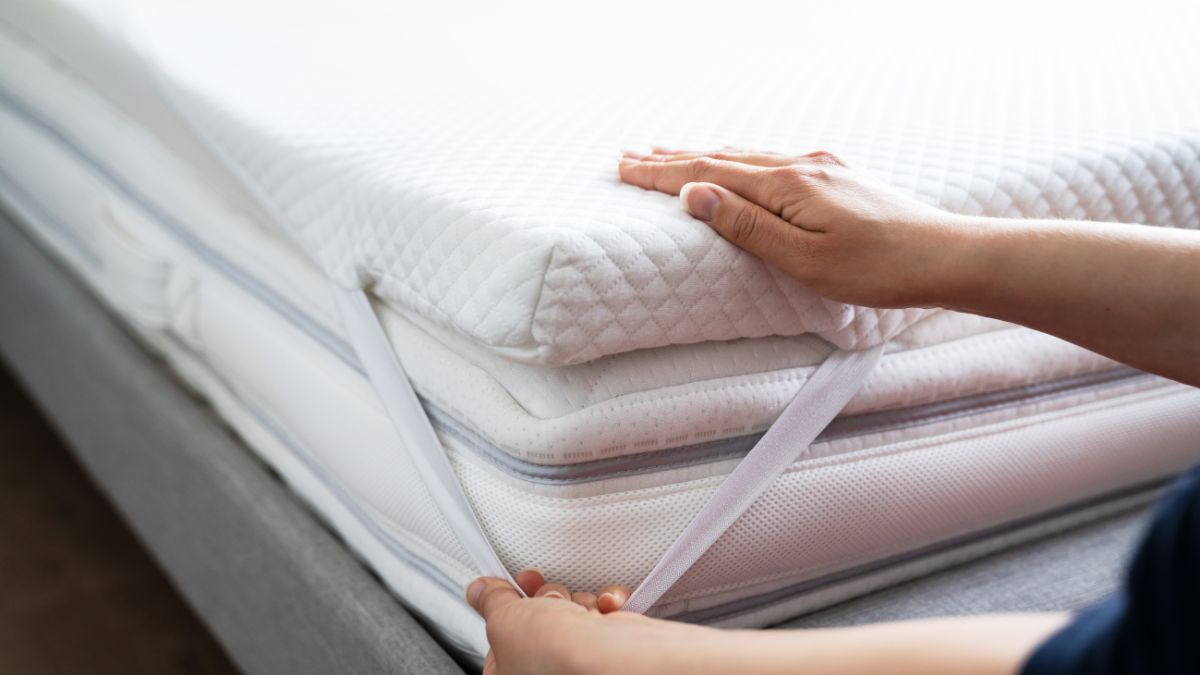
When shopping for a new mattress, one of the most important factors to consider is the thickness or depth of the mattress. Selecting the proper mattress thickness can optimize comfort, support your body’s contours, relieve pressure points, and promote restful sleep. This comprehensive guide examines how mattress depth impacts performance, recommended thicknesses for different types, and key considerations to help you choose your optimal mattress thickness.
Common Materials Used in Mattress Construction
The types of materials used in the layers of a mattress have an influence on appropriate mattress thickness. Different materials have their own properties that impact cushioning, bounce, breathability and durability over time. Common mattress materials include:
Memory Foam
Made from polyurethane, memory foam softens from body heat and conforms closely to the sleeper’s contours for pressure relief. Memory foam has excellent motion isolation but can sleep hot for some. Popular in mattresses 10-14 inches thick.
Latex Foam
Derived from the sap of the rubber tree, latex foam provides responsive support and bounce. Natural latex sleeps cool but synthetic blends are cheaper. Found in mattresses from 8-12 inches thick.
Polyfoam
The most affordable mattress foam, polyurethane is dense but less contouring. Provides basic cushioning and wide firmness range. Used as a support base or comfort layer.
Innerspring Coils
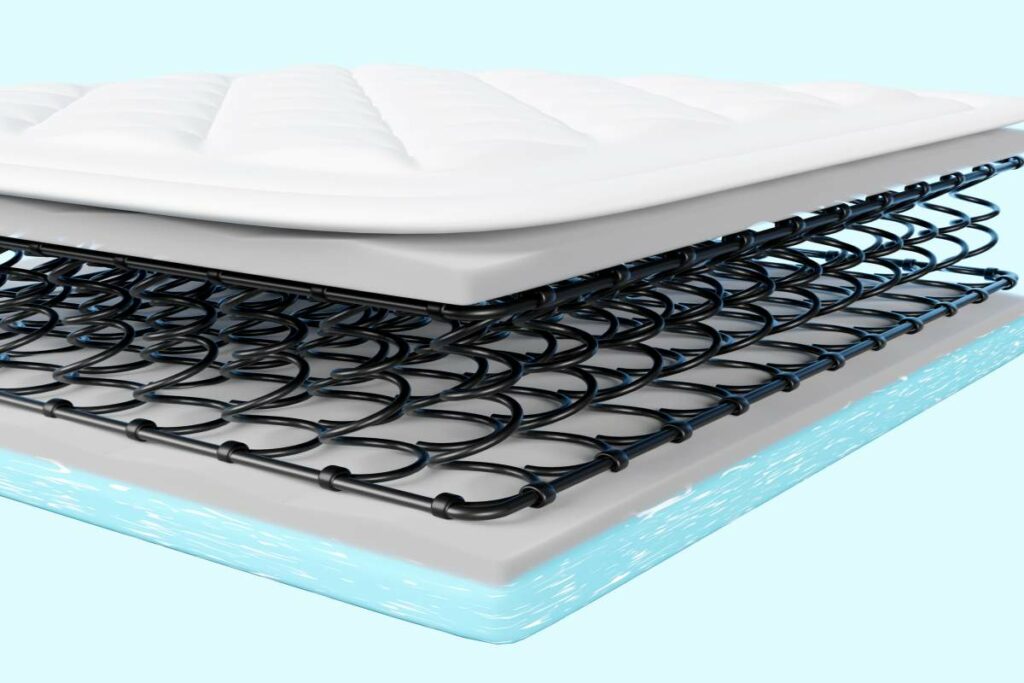
The traditional spring systems provide bouncy support and reinforced edges. Can have uncomfortable pressure points but advanced systems improve contouring. Usually 10-16 inches thick.
Hybrid Materials
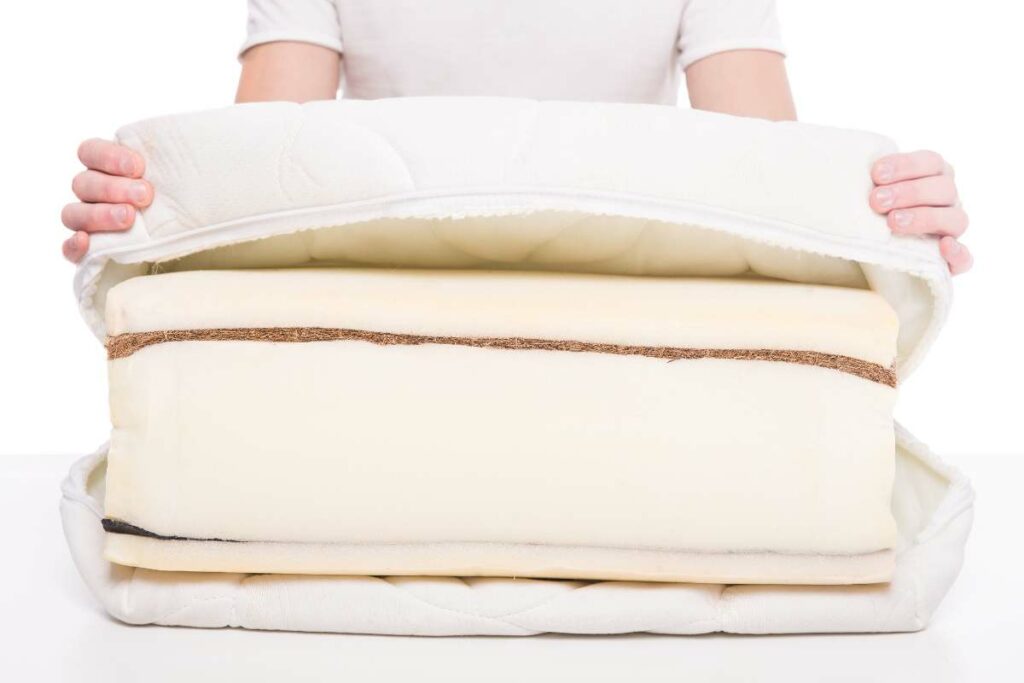
Combining coils with foam layers gives the bounce of springs with pressure relief from memory or latex foam. Hybrids are growing in popularity and come in a wide range of designs.
Natural Fibers
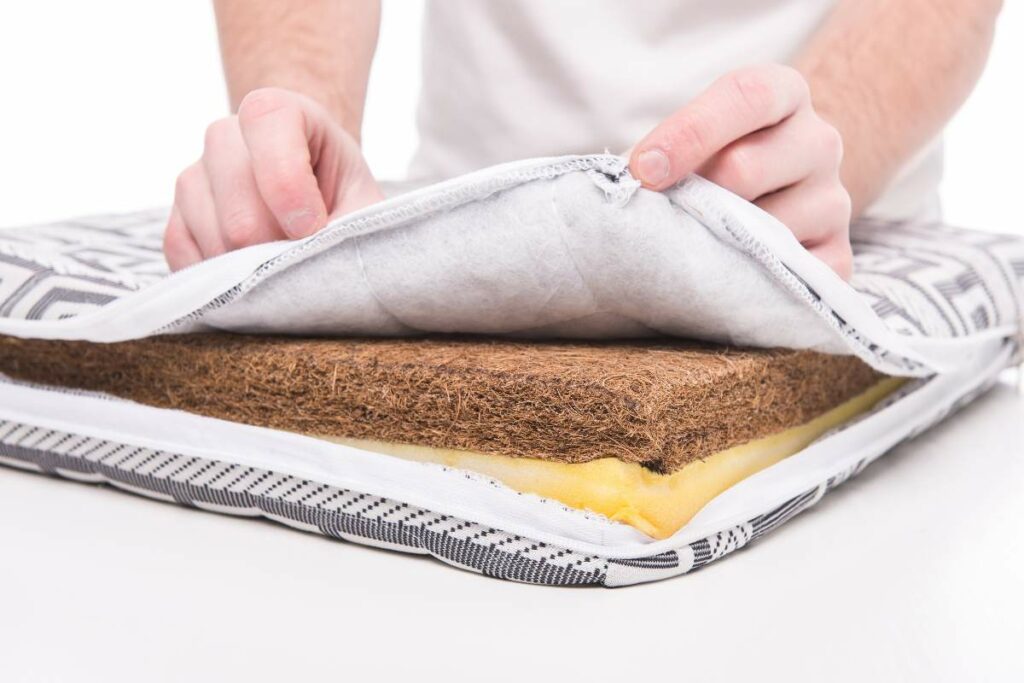
Materials like cotton, wool or other fabrics act as comfortable cushioning. Very breathable but less durable over time. Often used in top layers or wraps with other foams.
Adjustable Air
Using air chambers, these mattresses can digitally adjust firmness levels on each side. Customizable thickness for personalized comfort.
Wakefit Orthopedic Memory Foam Mattress 6-Inch King Size 78x72x6 Inches White
Rs. 12,997 in stock
Wakefit Natural Latex Memory Foam Mattress 8-Inch King Size (78x72x8 Inches)
Rs. 19,399 in stock
SleepyCat Original Spring Hybrid 3-Layered Medium Firm 6-inch Pocket Spring & Memory Foam Mattress with Quilted Bamboo Cover for Plush Surface Feel (King Size,78x72x6 Inches)
As you can see, the wide range of mattress materials differs in their ideal thickness range and performance attributes. Finding the optimal blend of comfort and support relies on the construction of each distinct layer.
Recommended Depths for Different Mattress Types
Based on input from leading mattress manufacturers and designers, here are the typical thickness recommendations for popular mattress types:
| Mattress Type | Recommended Thickness Range |
| Memory Foam | 10” – 14” |
| Latex Foam | 8” – 12” |
| Polyfoam | 6” – 10” |
| Pocket Coil Innerspring | 12” – 16” |
| Bonnell Coil Innerspring | 10” – 14” |
| Continuous Coil Innerspring | 10” – 16” |
| Hybrid | 12” – 16” |
| Adjustable Air | Customizable |
These ranges serve as general guidelines for the typical mattress thickness specs based on construction and materials used. However, always check the specifications from the mattress manufacturer when considering a particular model. Custom mattress makers also allow you to specify your preferred thickness during the design process within their material capabilities. This can help you fine tune the mattress depth to your body and sleep preferences.
How Thickness Impacts Comfort and Support Factors
Now that we’ve covered the typical thickness ranges for different mattress types, let’s explore how increasing the overall mattress depth can impact important factors related to both comfort and support:
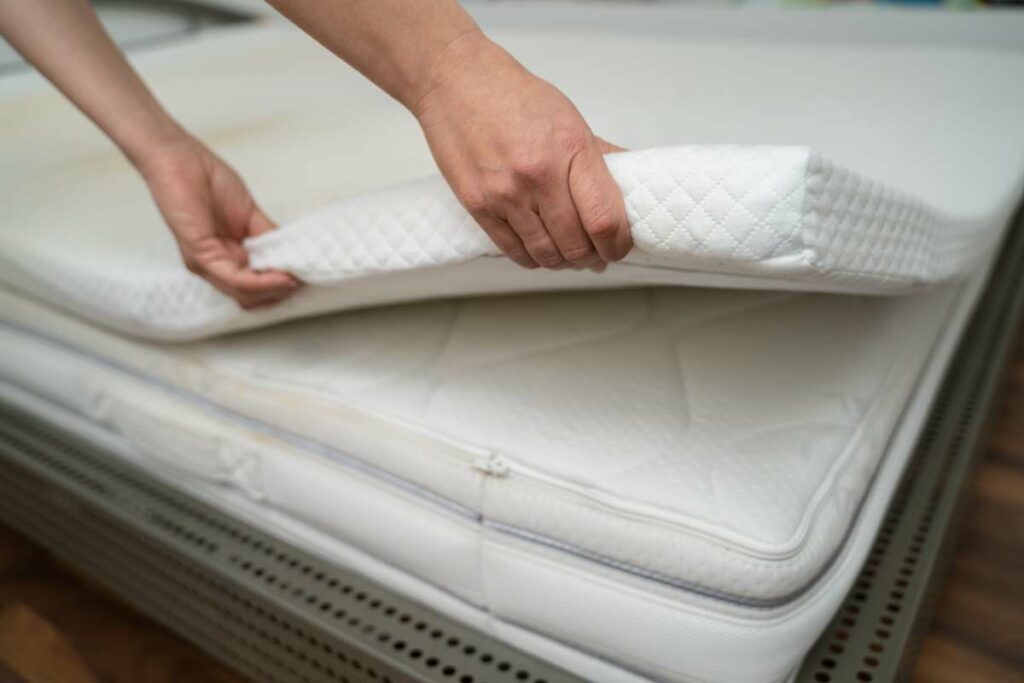
Plushness and Cushioning Comfort
A thicker mattress allows for additional layers of padding and cushioning materials on the surface. This creates a softer, more plush and pillowy feel upon initial contact. Beds with thicker comfort layers contour to the body more and relieve pressure points better. If you like sinking into an indulgently soft and cloud-like surface, choose a mattress on the thicker end of the range.
Firmness Options
Added mattress thickness provides designers more room to adjust the firmness feel. Thicker mattresses can use softer foams and padding to reach plush levels of softness. But they can also include firmer foams or sturdy coil systems paired with thinner comfort layers to achieve a very firm overall feel. In general, thicker mattresses can accommodate a wider range of customizable firmness preferences.
Body Contouring and Pressure Relief
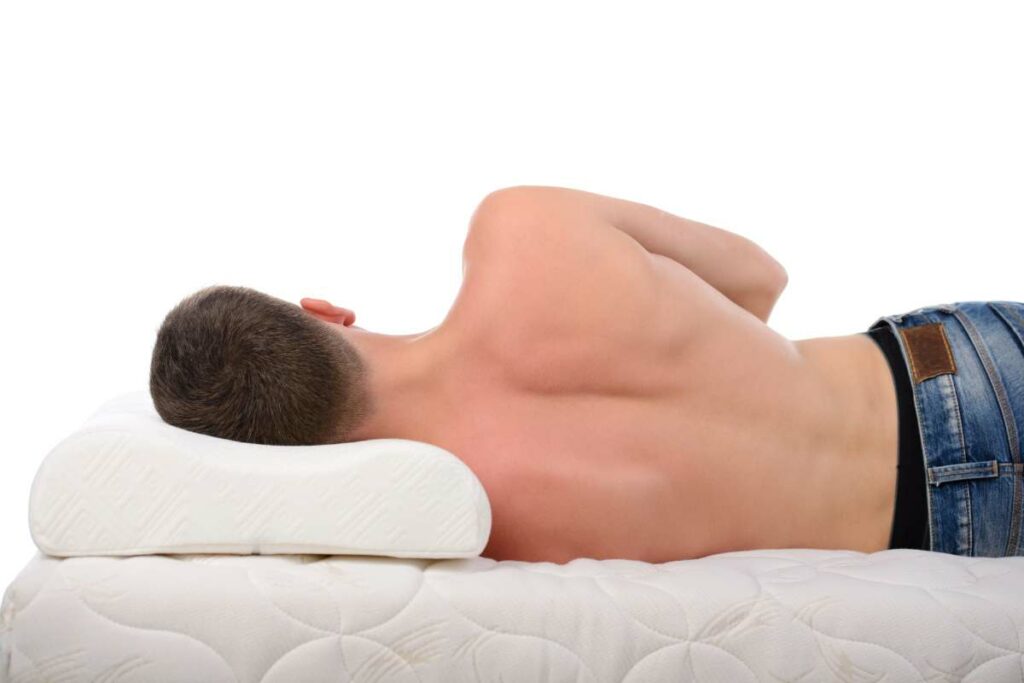
The depth of memory foam or other contouring materials allows for different levels of sinking and cradling support. With more thickness to work with, mattress makers can add extra foam layers to increase hug and envelopment of the body’s curves. This helps relieve pressure in areas like the shoulders, hips and back for side sleepers. If you want deep contouring, choose at least a 12-14 inch mattress.
Weight Distribution and Support
Adequate mattress thickness helps distribute body weight and minimize sinkage, especially for heavier individuals. Thicker mattresses provide the extra depth required for larger body types to help support their frame without sagging excessively. This provides better reinforcement for spinal alignment. If you or your partner are over 230 pounds, opt for a high end thickness range.
Edge Support
Added mattress height allows for reinforced edges that make you less likely to feel like you’ll roll off if you sleep near the sides. By building up the foam comfort layers along the perimeter or using thicker border wires in the coil support core, thicker mattresses offer enhanced edge support. This allows you to use the full sleep surface without sagging or collapsing on the edges.
Responsiveness and Bounce
Some sleepers prefer that “on top” feel of sleeping more on the mattress surface rather than in it. Mattresses at the lower end of the thickness range have slightly more bounce back and responsiveness. Thinner beds can allow for quicker changing of positions during the night as well. If you toss and turn often, don’t opt for an excessively thick option.
Personal Factors Influencing Ideal Mattress Thickness
The optimal mattress depth comes down to your own personal needs and preferences. What constitutes the best mattress thickness for you depends on factors like:
Body Type and Weight
Heavier individuals over 120 Kg often require the extra thickness for proper support and durability. Lighter sleepers under 80 Kg likely need less depth to prevent feeling swallowed by the mattress. Average weights can find comfort in the middle thickness ranges depending on other factors.
Dominant Sleep Position
Your preferred sleep position influences needed surface cushioning. For example, side sleepers require extra shoulder and hip padding which may mean a thicker comfort layer for pressure relief. Back and stomach sleepers need to maintain healthy spine alignment with minimal sinkage. Combination sleepers must balance comfort and support.
Sensitivity to Temperature
Thicker mattresses have more layers and materials to potentially absorb and trap heat. Those who sleep hot may want to opt for thinner breathable designs or added cooling features like copper-gel-infused foams, phase change covers, or innerspring with airflow.
Pre-Existing Pain and Conditions

If you suffer from chronic back pain or arthritis, the extra contouring and cushioning of a thicker mattress may help alleviate aches in pressure points. Just ensure thickness doesn’t allow excessive sinking that strains the lower back. Finding the right balance is key based on your needs.
Ease of Movement

Thicker and heavier mattresses can be more difficult to move, rotate, or flip. This may present challenges for older adults or those with mobility issues. Lighter thinner mattresses require less effort to adjust or transport if needed.
Partners with Mismatched Preferences
When sharing a mattress, added thickness provides more room to customize each side. Thicker mattresses allow for different materials and firmness levels for couples with different body types or preferences. This maximizes comfortable sleep for both.
Mattress Type and Material Specifications
Review mattress guidelines for depth based on materials in the comfort and support layers. For example, innersprings require more thickness for the coil system while memory foam provides the deepest contouring at over 12 inches. Follow manufacturer recommendations for thickness by type.
Room Size and Existing Bed Frames
Consider available space for the footprint of a deeper mattress. Also measure bed frames to ensure your selected thickness will fit properly without leaving gaps. RV’s, bunk beds and other constrained spaces may dictate thinner mattress requirements.
Personal Preference
Some simply prefer the feel of a thicker or thinner mattress based on long-held habits, custom, or aesthetics. But don’t let preconceived notions override your actual comfort needs if testing suggests a different ideal depth.
The only way to identify your optimal mattress thickness is to test out different options first-hand. This allows you to evaluate both the surface softness and underlying support with your own body.
Pros and Cons of Thick vs. Thin Mattresses
To summarize how increasing mattress depth impacts key factors:
| Thicker Mattress (12″-16″) | Thinner Mattress (8″-10″) |
| More plush, pillowy feel | Easier to climb into bed |
| Deeper contouring | Less difficult to move |
| Enhanced edge support | Takes up less space |
| Improved durability | Typically more affordable |
| Heavier and harder to change positions | More responsive bounce |
| Added customization for partners | May lack support for heavier sleepers |
Testing mattresses first-hand in multiple thicknesses allows you to assess the trade-offs and decide what works best for your preferences and needs.
Key Takeaways When Selecting Mattress Thickness
- Test out mattresses in different thickness ranges to evaluate comfort, support and ease of movement.
- Follow manufacturer guidelines for recommended thickness specs based on mattress type and materials used.
- Prioritize optimal spinal alignment and pressure relief over simply plushness or thinness.
- Carefully consider your body type, sleep position and other personal factors influencing needs.
- Thickness plays a key role but also review overall mattress construction and materials used.
- Finding your perfect “just right” mattress depth results in enhanced sleep quality and mattress satisfaction.
Is it Better to Have a Harder or Softer Mattress?
The answer to this question largely depends on individual preferences, sleeping positions, and specific health concerns.
Sleeping Positions and Mattress Firmness
The firmness of your mattress should align with your preferred sleeping position to ensure proper spinal alignment and pressure relief. Here is the recommended mattress firmness for different sleeping positions:
| Sleeping Position | Recommended Mattress Firmness |
| Side | Soft to Medium |
| Back | Medium to Firm |
| Stomach | Firm |
Side sleepers generally benefit from a softer mattress that allows their hips and shoulders to sink in, promoting better spinal alignment. Back sleepers require a medium to firm mattress to maintain the natural curvature of the spine. Stomach sleepers need a firm mattress to prevent their hips from sinking in, which can cause lower back pain.
Health Concerns and Mattress Firmness
Certain health conditions may also influence the ideal mattress firmness for an individual.
| Health Concern | Recommended Mattress Firmness |
| Lower Back Pain | Medium to Firm |
| Arthritis | Soft to Medium |
| Fibromyalgia | Soft to Medium |
| Acid Reflux | Medium to Firm |
| Allergies or Asthma | Firm |
People with lower back pain often find relief with a medium to firm mattress that provides adequate support. Those with arthritis or fibromyalgia may prefer a softer mattress that offers more pressure relief. Individuals with acid reflux can benefit from a medium to firm mattress that keeps their upper body slightly elevated. Firm mattresses are recommended for people with allergies or asthma, as they tend to accumulate less dust and allergens.
Mattress Lifespan and Firmness
The firmness of a mattress can also impact its lifespan. Harder mattresses tend to last longer than softer ones, as they are less prone to sagging and indentations over time. The table below shows the average lifespan of mattresses based on their firmness:
| Mattress Firmness | Average Lifespan |
| Soft | 5-7 years |
| Medium | 6-8 years |
| Firm | 7-10 years |
While a harder mattress may last longer, it’s essential to strike a balance between durability and comfort. A mattress that is too firm can cause pressure points and discomfort, leading to poor sleep quality.
So, the choice between a harder or softer mattress comes down to personal preference, sleeping position, and health concerns. If you are unsure about which mattress firmness is best for you, it’s advisable to consult with a sleep specialist or try out different mattresses in a store before making a purchase.
Also read,









